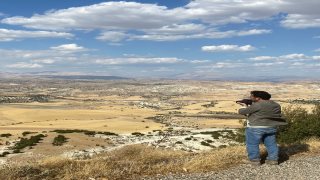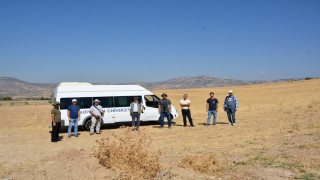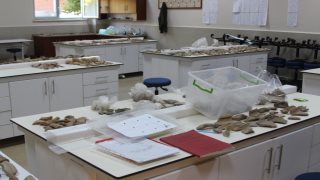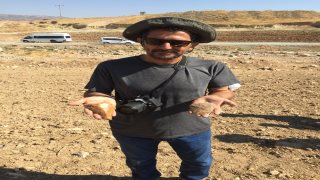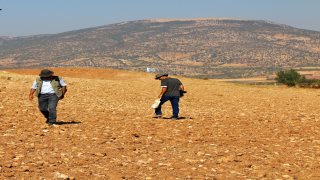
ADYU Faculty Member Assoc. Dr. Ezer, “We Have Reached Important Information Shedding Light on the Prehistoric Periods of Adiyaman”
ADYU Faculty Member Assoc. Dr. Ezer, “We Have Reached Important Information Shedding Light on the Prehistoric Periods of Adiyaman”
The field studies for the year 2021 of the "Adiyaman Province Prehistoric and Protohistoric Era Archaeological Surveys" project, which was carried out with the project acceptance and permissions of the Ministry of Culture and Tourism, General Directorate of Cultural Heritage and Museums, have been completed.
As a result of the field studies in 2021 carried out under the leadership of Assoc. Dr. Sabahattin Ezer, Head of the Archeology Department of the Faculty of Arts and Sciences of our university, Adiyaman's prehistoric periods (700,000 - 6000 BC) were focused on and exciting important findings were obtained.
While most of the studies in question took place in lesser-known areas of Adiyaman in terms of archeology, Assoc. Dr. Ezer underlined that important information and evidence that can shed light on the prehistoric periods of Adiyaman has been reached.
Ezer said, “Preliminary examination of the stone tools found in Gölbaşı District shows us that these finds should be dated to the Lower Paleolithic Age (700 thousand - 250 thousand BC). Archaeological determinations made in the south of the Besni District in 2020 and 2021, on the other hand, reveal the findings of the middle and last phases of the Paleolithic Age (250 thousand - 25 thousand BC) and the Neolithic Age (10,000 - 6000 BC). Thus, important information that sheds light on the unknown periods in the west of Adiyaman has been reached”.
Stating that Adiyaman has a very rich archaeological potential, Ezer said, "The "Adiyaman Province Archaeological Survey Project", which was initiated after the archaeological activities carried out within the scope of the "Lower Euphrates Project" in the 1980s, has become the most comprehensive archaeological study carried out in the whole of Adiyaman in recent years. Since 2013, many regions from the north to the south, from the east to the west of Adiyaman have been explored and close to 300 archaeological sites have been visited and detailed studies have been carried out on 132 of them. 50 archaeological settlements, which were examined by our research team for the first time, were registered in the archeology literature. As a result of the archaeological surveys we have carried out, it has been revealed that Adiyaman has a very rich archaeological potential, and it has clearly revealed that Adiyaman has been inhabited uninterruptedly, starting from prehistoric times until today.”
Stating that in the next phase of the project, which tries to shed light on the pre-history and prehistoric periods of Adiyaman, the existing archaeological data will be examined in the Adiyaman University Archeology laboratory and the results will be shared with the scientific world in a comprehensive publication, Ezer said, “We would like to thank Our Rector Prof. Dr. Mehmet Turgut and our Vice Rectors Prof. Dr. Fatih Doğanoğlu and Prof. Dr. Cumhur Kırılmış. Finally, I would like to thank the team members for their devoted work in this long-term project, who ensured the realization of the field work of this project without any problems.”

